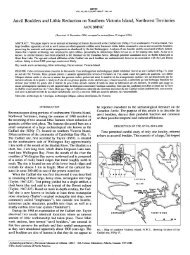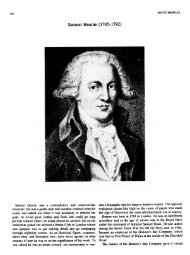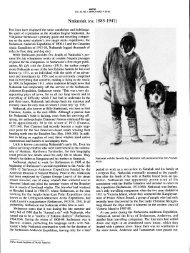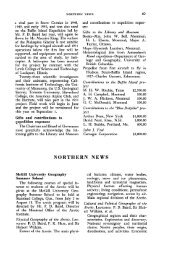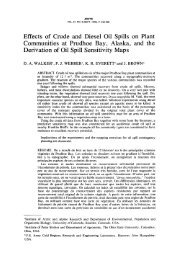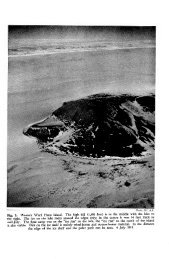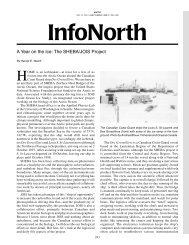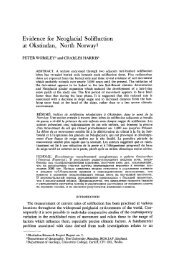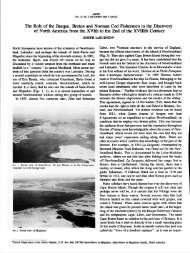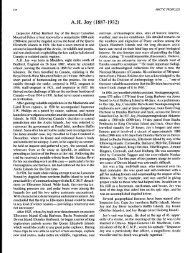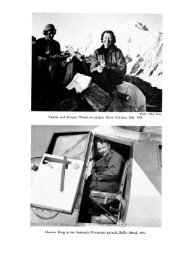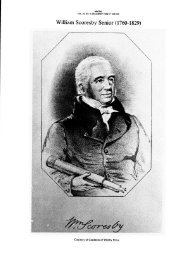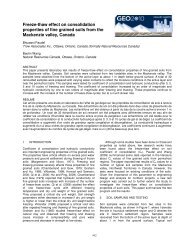NOTES ON THE NUNAMIUT ESKIMO AND MAMMALS OF ... - arctic
NOTES ON THE NUNAMIUT ESKIMO AND MAMMALS OF ... - arctic
NOTES ON THE NUNAMIUT ESKIMO AND MAMMALS OF ... - arctic
You also want an ePaper? Increase the reach of your titles
YUMPU automatically turns print PDFs into web optimized ePapers that Google loves.
166 <strong>THE</strong> <strong>NUNAMIUT</strong> <strong>ESKIMO</strong> <strong>AND</strong> <strong>MAMMALS</strong> <strong>OF</strong> <strong>THE</strong> ANAKTUVUK PASS REGI<strong>ON</strong><br />
The Nunamiut name for the winter den of bears is sidroak. According to the<br />
Inland People, the bears come to the mountains in the fall to den, and move<br />
north to the Arctic Slope in the spring.<br />
The bears often enter the dens very late, and some individuals not at all.<br />
I collected an old male on 15 October 1950, in heavy snow in the Savioyok<br />
valley, and an aged male was killed in the same locality on November 9. The<br />
Eskimo saw bear tracks on Ikiakpuk Creek on November 18, and the track of<br />
a large bear moving south along the upper North Fork near the end of<br />
Fig. 12. Grizzly bear, Savioyok valley, I5 October 1950.<br />
November. Tracks are commonly seen in November, but all the bears remaining<br />
out appear to be males. In this respect they are perhaps similar to the<br />
polar bear. Paneak told me of killing a large mal; bear on 18 December 1945,<br />
near the head of Hunt Fork. The animal was fat and in good condition, but,<br />
according to Paneak, all four feet had been frozen, resulting in hair loss. Bears<br />
killed in the winter usually have much ice in their fur. In former times the<br />
Nunamiut believed that grizzlies would deliberately enter an open spring<br />
winter, allowing water to freeze in their coat in order to retain warmth.<br />
in<br />
As reported by A. Murie (1944) for Urms toklat Merriam, the <strong>arctic</strong><br />
grizzly emerges from its den in April. In 1949 the first bear was killed by the<br />
Eskimo on May 6. On 3 April 1950 I saw the tracks of three different bears<br />
in the Savioyok valley; these had been made by an old female with a cub, and<br />
by what was apparently a yearling cub. The same day the tracks of a large<br />
adult were seen by the Eskimo in Okoluk Creek. In 1951 the first tracks



